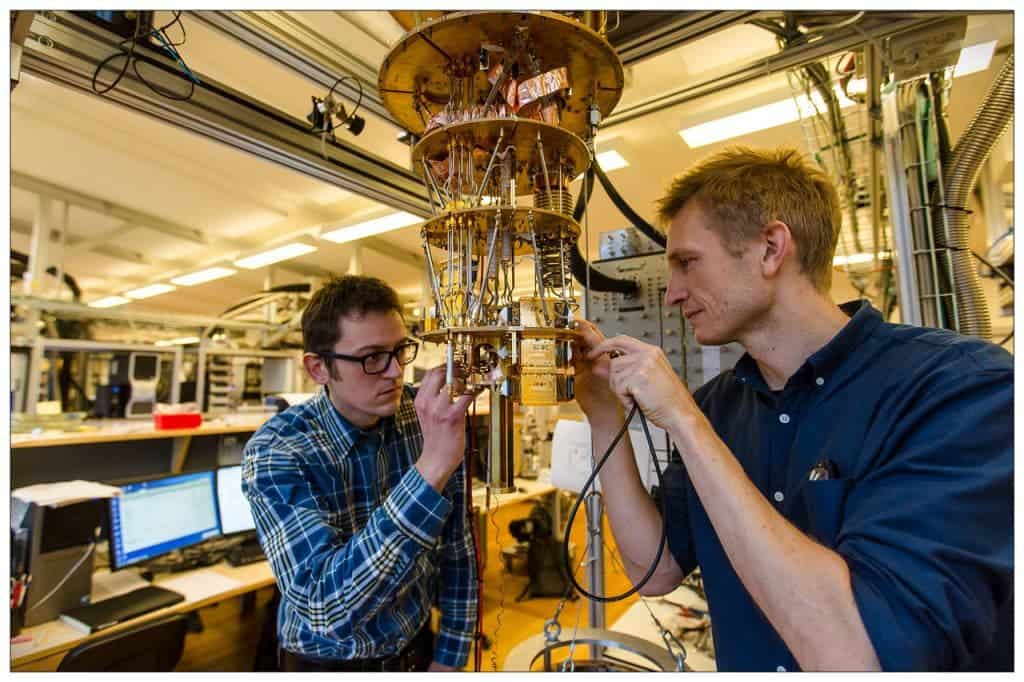
The longest a spacecraft has lasted on the surface of the hellscape that is Venus was a little over two hours. In 1981, the Soviet Venera 13 probe touched down on Venus. It relayed back some amazing color images and environmental data — and then promptly melted.
Venus is brutal. Its surface temperature hovers around 465°C (869°F) — as hot as an oven. The planet’s extremely thick atmosphere, primarily composed of carbon dioxide, exerts a tremendous amount of surface pressure roughly 92 times that of Earth’s at sea level. That’s comparable to being 900 meters (3,000 feet) underwater.
But what if our computers were capable of withstanding the extreme conditions on Venus? New research suggests this could someday become a reality.
Researchers at the University of Pennsylvania have developed a memory device made from aluminum scandium nitride (AlScN) that can function at temperatures high enough to melt rock.
“From deep-earth drilling to space exploration, our high-temperature memory devices could lead to advanced computing where other electronics and memory devices would falter,” said Deep Jariwala, associate professor at Penn Engineering. “This isn’t just about improving devices; it’s about enabling new frontiers in science and technology.”
A Breakthrough in Extreme Computing
Modern non-volatile memory (NVM) devices — meaning non-powered hardware such as hard drives or solid-state drives (SSDs) that store information without needing an active power source — fail at very high temperatures, causing your information to evaporate. Even the current state-of-the-art storage fails miserably at temperatures above 300 °C (572 °F).
However, the new ferroelectric diode created by scientists can operate at an astonishing 600 C (1,112 degrees F) for several hours. This advancement opens the door for sensors and computing devices to work in extreme environments, including AI systems.
The research centers on the use of ferroelectric AlScN. This material has emerged as a high-performance semiconductor option only in the past five years. Its main feature is its ability to retain an electrical state (on/off or the “1s” and “0s” used to represent digital data) even after an external electrical field is removed and at very high temperatures. The key to the device’s success lies in two main features. One is the precise metal–insulator–metal structure, which also incorporates platinum and nickel electrodes. The other is the diode’s thickness, which is a mere 45 nanometers.
This extremely thin structure is no accident. Rather, it’s the result of a lot of trial and error until the researchers settled on this Goldilocks thickness that strikes the perfect balance between ferroelectric switching and protection against material degradation.
The new device’s resilience was demonstrated by its ability to endure one million read cycles and maintain a stable on-off ratio for over six hours at scorching hot ambient temperatures. Naturally, this performance is described as “unprecedented” by the research team. The ability to combine this memory with processors could lead to computers that function in nearly any environment.
“AlScN’s crystal structure also gives it notably more stable and strong bonds between atoms, meaning it’s not just heat-resistant but also pretty durable,” said Dhiren Pradhan, study first author and a postdoctoral researcher the University of Pennsylvania.
“But more notably, our memory device design and properties allow for fast switching between electrical states, which is crucial for writing and reading data at high speed.”
A new form of device
Current silicon-based devices struggle in high-temperature environments. So, the industry traditionally employs silicon carbide technology, which is slower.
This breakthrough could herald a new era of non-silicon computing devices, capable of advanced data-heavy tasks. By meshing heat-resistant memory and processing units, scientists envision AI processors that can function in extreme conditions, potentially revolutionizing space exploration and industrial operations. As such, this is an exciting advancement that could open new frontiers in both scientific exploration and practical applications on Earth and beyond.
“While silicon carbide technology is great, it is nowhere close to the processing power of silicon processors, so advanced processing and data-heavy computing such as AI can’t really be done in high-temperature or any harsh environments,” Jariwala said.
“The stability of our memory device could allow integration of memory and processing more closely together, enhancing speed, complexity, and efficiency of computing. We call this ‘memory-enhanced compute’ and are working with other teams to set the stage for AI in new environments.”
The findings appeared in Nature Electronics.






